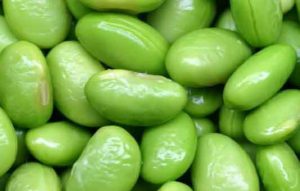
Soia
Soy formula feeding during infancy is associated with several indicators of severe menstrual pain in reproductive-age women.
Menstrual pain (dysmenorrhea) is characterized by menstrual bleeding-related abdominal pain, cramping or backache.
It is considered the most common menstrual complaint, with a prevalence of 60% among reproductive-age women.
Menstrual pain is believed to be triggered by the overproduction of endometrial prostaglandins in response to the withdrawal of progesterone at the onset of menses, leading to increased uterine contractility, hypoxia and pain.
The development of the reproductive system components involved in menstrual pain pathophysiology, the hypothalamus–pituitary–ovarian (HPO)-axis and the uterus, begins in utero, with the activation of the HPO-axis and uterine tissue differentiation continuing after birth, during infancy.
Given that infancy is a critical window of development and that steroid hormone signaling is central to the development of the reproductive system it is plausible that disruption from an exogenous estrogenic exposure in infancy may result in persistent reproductive system changes, including menstrual pain in adulthood.
One such infant exogenous estrogenic exposure is soy-based formula.
Soy formula contains phytoestrogens, predominantly the isoflavones genistein and daidzein, that are structurally similar to estradiol.

Breastfeeding
A new research, which included information on more than 1,500 African American women, reinforces findings in earlier studies that included mostly Caucasian women.
In the new study researchers found that women who had ever been fed soy formula as babies were, at ages 18-22 years, 50 percent more likely than those not fed soy to experience moderate or severe cramping during most periods when they were not using hormonal contraception and were also 40 percent more likely to have used hormonal contraception at some point to alleviate menstrual pain.
Researchers did not observe an association between soy formula feeding and ever or current medication use for menstrual pain.
However, considering the timing of first medication use after menarche, women fed soy formula as infants were 20% more likely than unexposed women to use medication for menstrual pain within five years of menarche.
In conclusion data suggest that soy formula feeding during infancy is associated with menstrual pain in adulthood.
See also
Chemicals with hormonelike activity, may perturb human development
Link…
A third of chemicals break EU safety laws
Link…
Eating estrogenic plants alters hormones in monkeys (2013-03-14)
Link…
For more information
Human reproduction
Soy-based infant formula feeding and menstrual pain in a cohort of women aged 23–35 years
Link…
A Longitudinal Study of Estrogen-Responsive Tissues and Hormone Concentrations in Infants Fed Soy Formula
Link…
MDN
This post is also available in:
 Italian
Italian


